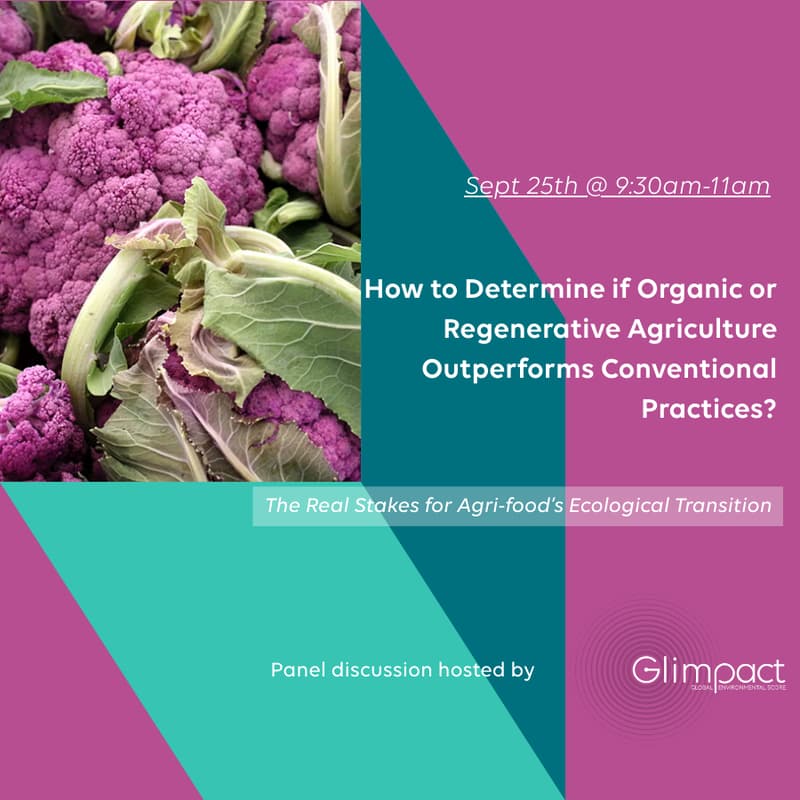

NY CW: How to determine if organic or regenerative agriculture outperforms conventional practices?
Labels of “Organic” and “Regenerative” are increasingly popular in the agri-food industry, often being marketed as sustainable alternatives to conventionally grown products, but do these labels really mean improved environmental performance?
To answer this question, we must look at environmental performance beyond just carbon emissions and consider factors like soil health, water use, biodiversity, and other aspects that shape the sustainability of our agricultural system. The Product Environmental Footprint (PEF) method, which has been adopted by the EU as a reference framework through the Green Deal, provides a clear, comprehensive definition of environmental impact, considering 16 total categories of impact, more than just carbon footprint emissions alone, incorporating different types of resource use, various types of pollution, etc. This method, developed in collaboration with scientists, industry experts, and governmental leaders, has become the European standard and is recognized by the UN as a universal means of measuring environmental impact. The PEF method, by defining a systemic vision of the environmental footprint, provides enormous opportunities for US businesses, especially in the agri-food sector, since it reveals the real stakes of the environmental crisis, and correspondingly uncovers a path forward for the ecological transition.
The agri-food industry is the second most environmentally impactful sector behind energy, with US businesses playing a large role, and the research is clear that that this impact largely comes at the farm level, being determined by the agricultural practices used to produce the ingredients and raw materials that sustain the entire sector. As practices which are perceived to be sustainable, such as “regenerative” or “organic” increase in prevalence, their environmental performance must be determined, alongside areas where they fall short.
Measuring environmental performance through the PEF method underscores the nuance of the various agricultural practices by considering the complete picture of environmental footprint. It is through this robust framework that ecological trade-offs, such as a switch to natural fertilizers requiring increased water consumption, can be uncovered and analyzed. With the PEF method, the efficacy of various regenerative agriculture practices, currently a broadly defined term, can be assessed and compared. Not only does this comprehensive methodology radically change our vision of the stakes of the environmental crisis, but it uncovers clear action leverage to enable the ecological transition.
This event will discuss the importance of the agri-food sector in the ecological transition, and how the understanding of environmental impact at the farm level, through the PEF method, is key to determining the path forward for the ecological transition. It is through this framework that “regenerative” and “organic” practices, commonly marketed as green and increasing in prevalence, can be understood to determine what works, and what borders on greenwashing.
This discussion will include the following:
The PEF method, which, by considering 16 categories of human impact on the planet, represents a paradigm shift in our understanding of environmental footprint.
A review of environmental impact in the agri-food industry, including common “hotspots” contrasted with misconceptions about where impact primarily happens.
Survey results of an impact study focusing on the Cacao supply chain illustrating how the PEF method can be applied to the Agri/Food industry to provide actionable insights into environmental impact reduction.
Impact assessment results of various grains grown using regenerative agriculture, uncovering through the PEF method the nuance and reality behind these practices.
How US businesses can leverage the PEF method and the opportunities provided.
Speakers:
Christine Ake, Director US Procurement @Puratos
Dr. Lewis Ziska, Professor of Environmental Health Sciences @Columbia University
More TBA soon.